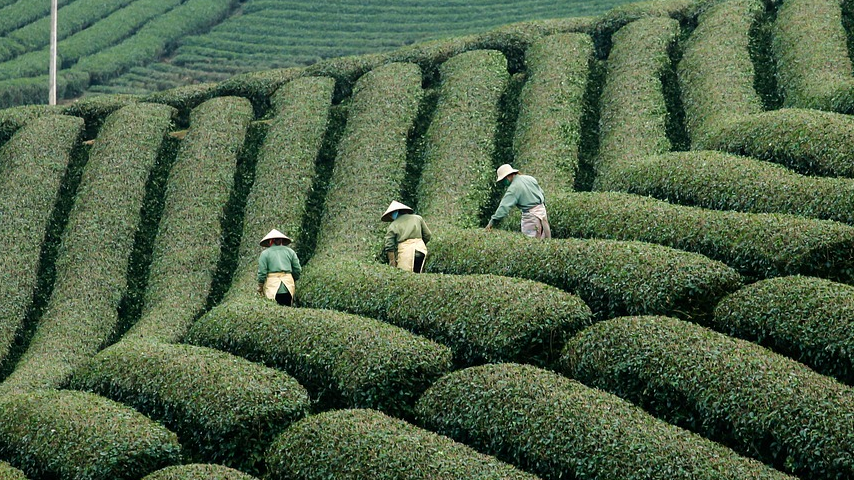Introduction
Crop rotation is a fundamental agricultural practice that has been used for centuries to improve soil health, increase yields, and reduce pests and diseases. It involves the systematic planting of different crops in a specific sequence on the same piece of land. The choice and timing of these crops are critical for maintaining soil fertility and achieving long-term agricultural sustainability. In modern agriculture, data-driven decision-making has taken crop rotation strategies to the next level. Crop acreage data has emerged as a valuable tool in helping farmers optimize their crop rotation strategies, providing insights into land usage, soil conditions, and market trends.
This article will explore how crop acreage data aids farmers in planning and executing effective crop rotation strategies, focusing on its role in enhancing productivity, managing risks, and promoting sustainable farming practices.
The Importance of Crop Rotation in Agriculture
Before diving into how crop acreage data optimizes crop rotation, it’s essential to understand the key benefits of crop rotation itself:
- Soil Health: Different crops have varying nutrient requirements. For example, legumes like peas and beans can fix nitrogen in the soil, which is beneficial for subsequent crops like corn that require nitrogen. Rotating crops prevents nutrient depletion and improves soil structure.
- Pest and Disease Control: Crop rotation disrupts the life cycles of pests and diseases that may become established if the same crop is planted repeatedly. For instance, rotating non-host crops can help break the cycle of soil-borne diseases.
- Weed Management: Certain crops suppress weeds better than others. By rotating crops, farmers can reduce weed pressure and decrease their reliance on chemical herbicides.
- Yield Optimization: By alternating crops that have complementary nutrient needs and growth cycles, farmers can optimize their yields over time.
- Sustainability: Crop rotation contributes to long-term sustainability by improving soil health and reducing the need for chemical inputs, which can harm the environment.
What Is Crop Acreage Data?
Crop acreage data refers to information about the amount of land dedicated to growing specific crops over time and across regions. This data is collected through various methods, including satellite imagery, remote sensing technologies, government surveys, and on-the-ground assessments. The data provides detailed insights into crop production trends, land usage, and market demands. When combined with other agronomic data such as soil health, climate conditions, and historical yields, crop acreage data becomes an indispensable resource for optimizing farming practices, including crop rotation strategies.
How Crop Acreage Data Helps Farmers Optimize Crop Rotation Strategies
1. Informed Decision-Making with Historical Acreage Trends
Farmers can use historical crop acreage data to identify trends in land use and productivity over time. By analyzing past data, farmers gain a clear understanding of which crops have been grown on their land and how those choices have affected yields, soil quality, and overall farm profitability.
- Improving Crop Rotation Cycles: Farmers can assess which crops were most successful in specific fields and which ones underperformed. This allows them to design more effective crop rotation cycles by selecting crops that improve soil health while meeting market demands.
- Avoiding Monoculture: Continuous monoculture (planting the same crop year after year) depletes soil nutrients and promotes pest buildup. Historical crop acreage data helps farmers avoid monoculture by planning rotations that prevent nutrient depletion and pest infestations.
2. Enhancing Soil Fertility
Crop acreage data provides insights into how different crops affect soil fertility. By combining acreage data with soil analysis, farmers can create customized crop rotation plans that maximize nutrient availability.
- Nutrient Management: Certain crops, such as legumes, add nutrients like nitrogen to the soil, while others may deplete specific nutrients. Crop acreage data allows farmers to track nutrient depletion or enrichment and plan rotations accordingly to maintain soil fertility.
- Cover Crops: Acreage data can also be used to plan the integration of cover crops, which help improve soil health during fallow periods. For example, planting a cover crop after a high-demand cash crop can replenish nutrients and protect the soil from erosion.
3. Risk Management and Resilience
Crop acreage data plays a crucial role in crop risk management, helping farmers mitigate risks associated with market fluctuations, weather conditions, and crop diseases.
- Diversifying Crop Types: Crop rotation inherently diversifies the types of crops grown, which reduces the risk of a complete crop failure. Acreage data helps farmers identify which crops perform well in different conditions and can be rotated to manage risks more effectively.
- Adaptation to Climate Variability: Climate change has introduced more unpredictability into farming. By analyzing acreage data from regions with similar climate conditions, farmers can predict how certain crops might respond to changing weather patterns and adjust their rotations accordingly.
- Disease and Pest Resistance: Acreage data allows farmers to track disease outbreaks and pest infestations in their region. Rotating crops based on this data can help farmers avoid planting crops that are vulnerable to specific pests or diseases, improving the overall resilience of their farming operations.
4. Maximizing Economic Returns
Crop acreage data provides critical insights into market trends, allowing farmers to align their crop rotation strategies with market demands. This data-driven approach helps farmers maximize their economic returns while maintaining sustainable practices.
- Meeting Market Demands: Acreage data reveals trends in crop supply and demand, helping farmers decide which crops to plant based on market prices and potential profitability. Farmers can plan rotations that not only improve soil health but also meet market demand for specific crops.
- Reducing Input Costs: By optimizing crop rotation strategies, farmers can reduce their reliance on expensive inputs like fertilizers and pesticides. Healthy soil and pest-resistant crop rotations decrease the need for chemical interventions, reducing input costs and increasing profitability.
5. Sustainability and Environmental Benefits
Sustainability is an increasingly important factor in modern agriculture, and crop rotation is a key practice for achieving long-term sustainability goals. Crop acreage data helps farmers implement environmentally friendly farming practices that conserve natural resources.
- Reducing Environmental Impact: Data-driven crop rotation strategies reduce the need for chemical inputs, which can have harmful effects on the environment. Farmers can use acreage data to design rotations that improve soil health naturally, reducing the reliance on synthetic fertilizers and pesticides.
- Water Management: Some crops require more water than others. By using acreage data to plan crop rotations, farmers can balance water usage across different growing seasons, conserving water resources and reducing the risk of drought stress.
- Carbon Sequestration: Certain crops, especially cover crops, can sequester carbon in the soil, reducing the overall carbon footprint of the farm. Crop acreage data allows farmers to identify the best opportunities for integrating carbon-sequestering crops into their rotations.
6. Technology Integration for Real-Time Insights
The rise of technology in agriculture has made crop acreage data more accessible and actionable than ever before. Farmers can now use advanced tools such as Geographic Information Systems (GIS), remote sensing, and precision agriculture platforms to gather and analyze crop acreage data in real time.
- Precision Agriculture: Precision agriculture tools allow farmers to integrate crop acreage data with real-time field monitoring systems. This helps farmers make more informed decisions about when and where to plant specific crops, optimizing their crop rotation strategies based on current field conditions.
- Remote Sensing and Drones: Drones and satellite imaging provide up-to-date crop acreage data, allowing farmers to monitor crop performance and adjust their rotations on the fly. This technology provides a bird’s-eye view of the farm, making it easier to spot issues such as pest infestations or nutrient deficiencies that can influence rotation decisions.
7. Integrating Crop Acreage Data with Ultra-Low Temp Freezer Technology
In addition to optimizing crop rotations, farmers can use crop acreage data to manage cold storage needs for temperature-sensitive crops. For instance, crops like fruits, vegetables, and seeds that require preservation through cold storage can benefit from data-driven planning.
- Ultra-Low Temp Freezer Technology: Farmers can use acreage data to predict the storage capacity they will need for temperature-sensitive crops. Ultra-low temp freezer technology ensures that these crops are stored at the correct temperature, preserving their quality for extended periods.
- Storage and Distribution Planning: Acreage data helps farmers plan the post-harvest logistics of their crops, including storage in ultra-low temp freezers and distribution to markets. Proper storage is critical for maintaining the quality of perishable crops, especially when rotating high-value crops like fruits and vegetables.
Conclusion
The integration of crop acreage data into crop rotation planning has transformed the way farmers approach this age-old agricultural practice. By using data-driven insights, farmers can make informed decisions that improve soil health, enhance productivity, and mitigate risks. In addition, the use of technology such as ultra-low temp freezers and remote sensing tools further amplifies the benefits of data-driven farming.
As agriculture continues to evolve, the importance of using data to optimize crop rotation strategies will only increase. Crop acreage data allows farmers to adapt to changing conditions, improve their yields, and contribute to sustainable farming practices that benefit both the environment and their bottom line. By embracing these innovations, farmers can ensure that their crop rotation strategies remain effective, profitable, and sustainable in the years to come.






